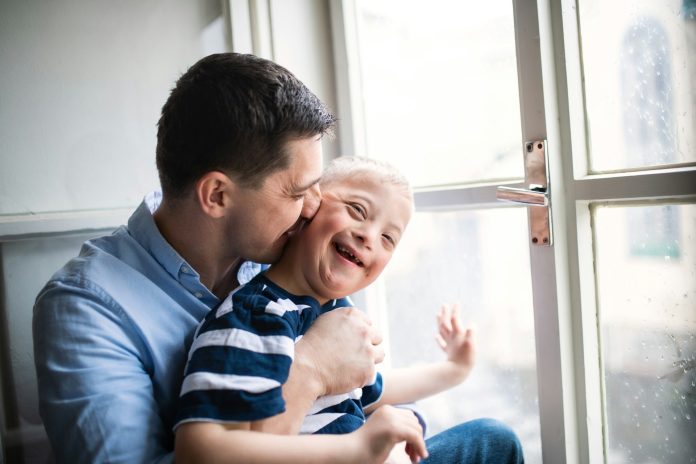
Siblings of children with autism have a higher chance of being diagnosed with autism themselves, according to a new study.
Researchers found that the likelihood of autism recurring in families is about 20%, which is roughly seven times higher than the risk for children without autistic siblings.
This important finding comes from a new study by Dr. Sally Ozonoff, a researcher at the UC Davis MIND Institute, and the Baby Siblings Research Consortium, which includes research teams from over 20 universities around the world.
Dr. Ozonoff, who has spent many years studying autism in families, led this new study to further explore how autism may run in families. The study confirmed earlier research from 2011, which also found a similar rate of autism recurrence among siblings.
The new research, published in Pediatrics, was conducted with a larger and more diverse group of families across the U.S., Canada, and the U.K., which strengthens its findings.
Why This Study Matters
Over the past decade, the rate of autism diagnosis has steadily increased. The Centers for Disease Control and Prevention (CDC) now estimates that 1 in 36 children has autism, compared to 1 in 68 in 2011.
There have also been changes in how autism is diagnosed, and more attention is now being given to recognizing autism in girls, who were often overlooked in earlier studies.
With these changes in mind, Dr. Ozonoff and her team wanted to know if the chances of autism being passed down in families had changed as well.
Their new study found a recurrence rate of 20.2%, which is only slightly higher than the 18.7% found in the 2011 study. While this small increase is not considered significant, it is still valuable information for families and doctors.
Dr. Ozonoff hopes that these findings will provide reassurance to families. Knowing the likelihood of recurrence can help parents plan for future children and make sure they are aware of early signs of autism, allowing for earlier interventions if needed.
Study Details
The new study involved 1,605 babies from 18 research sites who all had an older sibling with autism. The research followed these babies from six months of age, assessing them regularly until they reached the age of three.
The researchers used a trusted diagnostic tool called the Autism Diagnostic Observation Schedule (ADOS-2) to determine whether these children also had autism.
One of the key findings was that the sex of the first autistic child in a family mattered. If the first child with autism was a girl, the chances of having another child with autism were 50% higher than if the first child was a boy.
This points to possible genetic differences that may influence the likelihood of autism running in families with daughters on the spectrum.
The study also found that having more than one autistic sibling increased the chance of autism in future siblings. If a child had more than one sibling with autism, their risk of also being diagnosed with autism rose to 37%, compared to 21% for children with only one autistic sibling.
Factors That Influence Autism Risk
The study explored other factors that could impact the likelihood of autism recurring in families. For example, the sex of the newborn sibling played a role. Boys were almost twice as likely as girls to be diagnosed with autism if they had an older sibling on the spectrum.
This finding aligns with broader research showing that boys are diagnosed with autism about four times more often than girls.
Additionally, the researchers found that race and the mother’s education level also influenced the recurrence rate. In non-white families, the recurrence rate was 25%, while in white families, it was about 18%.
Families where the mother had a high school education or less saw a recurrence rate of 32%, compared to 16.9% in families where the mother had a graduate degree.
These differences suggest that factors such as access to healthcare and education may play a role in autism diagnosis. Dr. Ozonoff pointed out that these findings mirror recent CDC data showing that autism is more common among historically underrepresented groups.
However, the study wasn’t designed to explain why these differences exist, and more research is needed to understand the social factors that might contribute to higher rates of autism in certain families.
Importance of Early Monitoring
One unique aspect of this study was that it tracked families who left the study early to see if their outcomes were different from those who stayed.
This was done to check whether families with children who were more affected by autism were more likely to stay in the study, potentially skewing the results. However, the researchers found that the outcomes were similar for both groups, confirming the accuracy of their findings.
Dr. Ozonoff emphasized that these results highlight the importance of closely monitoring younger siblings of children with autism, particularly for delays in social skills and communication.
Early diagnosis and intervention can make a big difference in a child’s development, and it’s especially important for families with less access to healthcare to get the support they need.
In conclusion, the study reinforces the idea that autism is likely to recur in families and highlights the need for early monitoring and support.
The findings provide valuable guidance for doctors and families alike, offering insight into the factors that may influence autism risk and the importance of early interventions.
If you care about autism, please read studies about food additives and ADHD, and natural fixes for ADHD.
For more health information, please see recent studies about nutrition’s role in managing ADHD, and this type of food may contribute to autism.
The research findings can be found in Pediatrics.
Copyright © 2024 Knowridge Science Report. All rights reserved.



